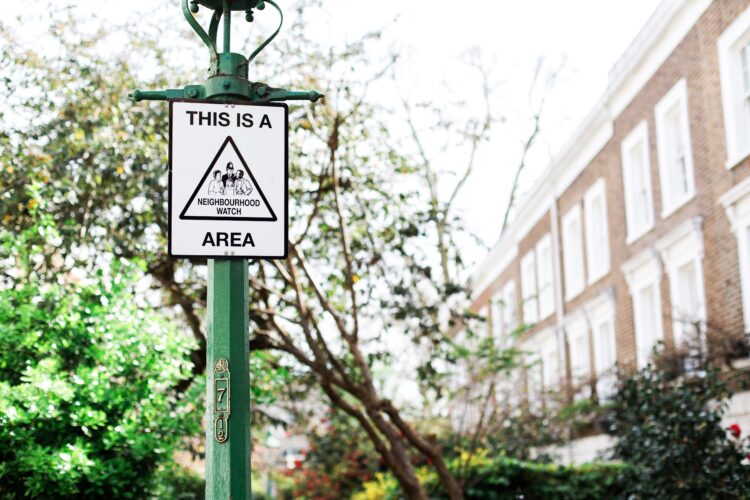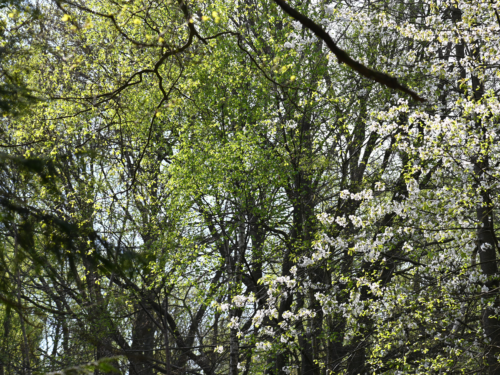Striking new heat maps from five major English cities show that areas with higher levels of tree cover, green space or both were much cooler. The analysis finds areas with fewer trees and green space are up to five degrees warmer during UK’s hottest days.
A year after the UK broke national heat records and reached a new all-time temperature high, striking new heat maps from five of England’s biggest cities reveal the huge benefits of trees and green spaces in helping to cool urban areas.
Innovative new analysis, carried out by mapping experts TerraSulis on behalf of Friends of the Earth, helps visualise the stark temperature variances felt by communities living in different areas of five major cities – London, Manchester, Birmingham, Bristol and Newcastle. The cooling abilities of green space and trees have been well-researched, but this is the first time their combined effects on built up areas have been modelled.
The research finds that inner-city areas with fewer trees and green spaces were up to five degrees hotter than those with more tree cover and plant life during last year’s hottest day on record. The new mapping brings this to life, with the hottest areas in each city appearing dark red, and the coolest, most nature-dense areas a cool blue.
Marginalised communities are most impacted by the climate crisis in the UK and overseas. The research finds that people of colour make up 65% of the population in neighbourhoods with the least cooling. People living on lower incomes are also disproportionately affected by a lack of natural cooling near their homes. Air pollution is also worse in the hottest areas.
The maps build on previous research by Friends of the Earth and TerraSulis which found that a shocking 43% of neighbourhoods in English towns and cities have less than 10% tree cover, while over a third lack adequate access to green space – strengthening the case for increasing tree numbers to help shield communities from the increasingly hotter temperatures caused by climate change.
According to the UK Health Security Agency , 2,803 excess deaths occurred during the summer of 2022. Respiratory problems are thought to be the main cause of premature deaths during heatwaves, with heat and air pollution proving an especially toxic mix – and why action to curb air pollution, such as the London Mayor’s Ultra Low Emissions Zone (ULEZ) scheme are needed alongside measures to cool our cities.
Hot weather can also place a particular strain on the heart and cardiovascular system. Those with pre-existing medical conditions, older people and very young children are especially at risk from the dangerous health outcomes associated with soaring temperatures.
Friends of the Earth Hackney and Tower Hamlets member, Chris Kilby, lives in one of the areas of inner-city London most affected by extreme heat. Mr Kilby, 70, has chronic obstructive pulmonary disease (COPD) and asthma, which both cause breathing difficulties and are exacerbated by hot weather and air pollution.
“When the weather is extremely hot, it completely knocks me sideways,” he said. “Last year, I believed I had overcome the worst of it, but this year’s hot weather has made it nearly impossible for me to leave my house.
“Even little things like doing my regular exercises on my balcony has become really difficult. I have resorted to taking walks at night to avoid the heat and traffic during the day. This is not ideal but it’s the only period when I can comfortably go for a walk without being worried about triggering my COPD symptoms.”
Rowha Mohid, who lives in Redbridge in London, is a peer mentor for Friends of the Earth’s Climate Youth Society and founder of GuiltlessThreads, a social impact company that runs events to tackle stereotypes and unconscious bias. Her work includes providing workshops for communities of colour on addressing eco-anxiety.
“Historically, people living in low-income, urban areas have had to suffer from soaring pollution levels due to badly regulated factories and roads,” she said. “Now, we are being robbed of green spaces by luxury developments that do nothing to benefit the people living in our communities.
“As we experience more extreme heat during summers, people have nowhere cool to shelter, which leaves the most vulnerable at risk of serious health complications. Working class communities have as much of a right to clean air, green space and a healthy environment as wealthy ones.”
Last month, the Climate Change Committee published its annual report to parliament , which warned of the government’s “worryingly slow” progress on tackling climate change – the same month which saw the UK’s temperature record for June broken .
Friends of the Earth is calling on the government to commit to three measures to help protect communities from the increasing risk of environmental harm due to climate change. These include:
- Rapidly ramping up tree-planting in towns and cities, alongside protecting existing mature trees, by committing to no less than 20% tree cover across urban areas as part of the government’s upcoming Urban Trees Standard.
- Prioritising more than 3,000 neighbourhoods most vulnerable to scorching temperatures as part of a council-led, street-by-street insulation programme, to help keep homes cool in summer and warm in winter, while slashing energy bills and household carbon emissions.
- Rolling out London’s ULEZ expansion plans and Clean Air Zones in cities around the country.
Mike Childs, head of science, policy and research at Friends of the Earth, said:
“It’s remarkable to see such a striking visual representation of the cooling power of trees and green spaces in our towns and cities. Our mapping shows that access to green spaces provided welcome cooling of up to 5 degrees on last year’s hottest day.
“We know that extreme weather, including heatwaves, is become more frequent and severe due to the climate crisis. But not everyone is affected equally, with the most marginalised communities the hardest hit in the UK and overseas.
“Boosting tree numbers is such a clear win for our communities and our planet, not just because of their ability to cool urban areas, but because they capture planet-warming carbon too. This should be prioritised alongside a rapid programme of council-led, street-by-street insulation, which helps keep homes cool in the summer just as much as it keeps them warmer in winter.”
 https://www.maelor.co.uk/wp-content/uploads/2024/05/Property-Photos-3-500x295.png
https://www.maelor.co.uk/wp-content/uploads/2024/05/Property-Photos-3-500x295.png






